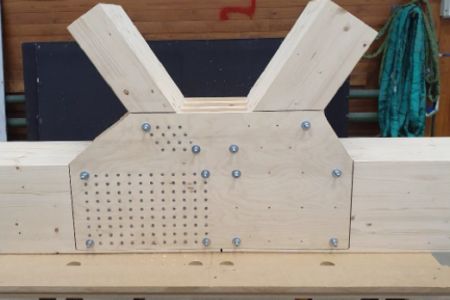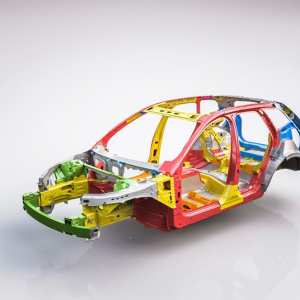Lars Blomqvist
Ph.D. in Forest Industry Production Systems


Project time: 2021 – 2024
Budget: 6 546 714 kr
Building systems for timber structures, which reduces construction cost and climate impact.
The aim of this research project is to explore the possibility of producing a new type of building system for resource-efficient, medium to long-span timber structures. The idea is based on designing new types of easy-to-assemble wooden connections with high-strength birch plywood replacing conventional steel plate systems. Building systems for adaptive assemblages will be made in a digitized controlled process of standardised parts, where the design itself is optimised to fit the system.
The goal is to increase the resource efficiency and to thereby reduce the embodied energy and climate impact of such structures compared with traditional timber structures. Standardised parts provide economies of scale. Modularization provides increased manageability. Numerical processes provide repeated tolerances.
Expected effects are increased resource efficiency, lower sensitivity to tolerances, shortened production time and increased precision in the building systems, which reduces construction cost and climate impact.
The project resulted in a supportive tool for collaboration projects with the purpose of developing robust production equipment with high production efficiency in combination with low operational and maintenance costs.
2013 – 2016
The aim of the present project is to develop a prediction tool for laminated veneer products (LVPs) to make it possible for the industry to improve product performance by reducing rejects and customer complaints and reducing time from idea to market by means of a tool to simulate LVP performance.
2019 – 2021
Better work instructions for more efficient and inclusive work
2022 – 2025
Difficulties in joining are often a limiting factor for vehicle manufacturers during product weight reduction.
2020 – 2023

The overall goal of DiSAM is to create a unique test AM Hub in Sweden for metal and polymer based additive manufacturing processes.
2017 – 2021